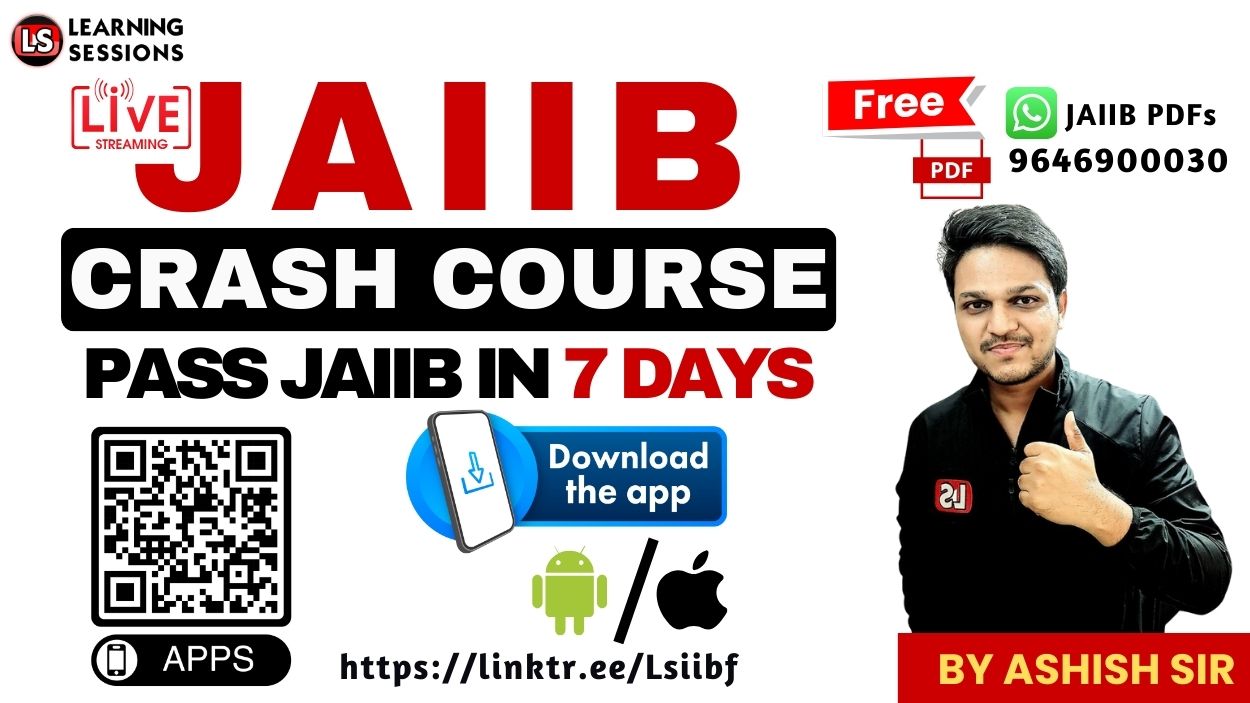Banks operate in a dynamic financial environment where managing funds, risks, and investments is critical. For aspirants preparing for the CAIIB BFM paper, understanding the Introduction to Treasury Management & Treasury Products is essential. This article explains the complete topic and also gives access to your preparation video and downloadable PDF notes.
🎥 Watch the Full Video Lecture
📚 CAIIB Study Resources 📚
👉 Check Here
👉 Check Here
👉 Check Here
👉 Get Tests Here
👉 Check Here
👉 Click Here
👉 Click Here
1. What is Treasury Management?
Treasury Management refers to the efficient management of funds, liquidity, and financial risk within a bank. Its primary objective is to ensure adequate liquidity, optimize returns, and minimize risk. Over time, the treasury has evolved from a service center to a profit center responsible for active fund deployment and risk management.
Key Functions of Treasury
- Liquidity Management – ensuring smooth payment obligations.
- Funds Deployment – investing surplus in market instruments.
- Funds Sourcing – borrowing from interbank or money markets.
- Risk Management – controlling interest rate, credit, and market risks.
- ALM Coordination – working closely with the Asset-Liability Management desk.
- Dealing Operations – handling forex and capital market transactions.
2. Organizational Models of Treasury
The structure of a bank’s treasury can vary depending on its size and strategy. The main models are Centralized Treasury, Decentralized Treasury, and Departmental or Specialized Branch models.
| Model | Description | Advantages | Challenges |
|---|---|---|---|
| Centralized Treasury | All treasury functions handled at Head Office level. | Uniform strategy, better control, cost efficiency. | Less flexibility for regional decisions. |
| Decentralized Treasury | Branches or departments perform their own limited treasury activities. | Quick decisions, better customer proximity. | Inconsistent policies, weaker central control. |
| Specialized Branch | Dedicated branch with full autonomy for treasury operations. | Professional expertise, focused risk control. | Higher setup costs, monitoring required. |
Difference between Decentralized and Departmental Model:
The decentralized model gives autonomy to regional offices for specific transactions, while the departmental model operates as a sub-unit under head office treasury. Both require effective coordination to prevent mismatches.
3. Treasury Products / Instruments
The treasury deals with multiple instruments across different markets. These include:
A. Money Market Instruments
- Call / Notice Money
- Repo and Reverse Repo
- Commercial Paper (CP)
- Certificates of Deposit (CD)
- Interbank Borrowing and Lending
B. Securities Market Instruments
- Government Securities (G-Secs, Treasury Bills)
- State Development Loans (SDLs)
- Corporate Bonds and Debentures
- Municipal Bonds and Tax-Free Bonds
C. Foreign Exchange Instruments
- Spot and Forward Contracts
- Swaps (Currency, Interest Rate, Cross-Currency)
- Options and Futures Contracts
D. International Products
- GDRs, ADRs, IDRs
- External Commercial Borrowings (ECB)
- Rupee-Denominated Bonds
4. Commercial Paper – Credit Rating Requirement
Commercial Paper (CP) is an unsecured short-term instrument issued by corporates and financial institutions for liquidity management.
- Tenure: 7 days to 1 year.
- Issued at discount, redeemed at face value.
- Must be backed by a minimum credit rating (A1+ or equivalent) from a recognized Credit Rating Agency.
- Only highly rated issuers are allowed to access the CP market to protect investors.
5. Role of Treasury in ALM & Risk Management
Treasury plays a critical role in the bank’s Asset–Liability Management (ALM) by managing liquidity and market risks.
- Manages interest rate risk through duration and repricing gap analysis.
- Maintains liquidity buffers for contingencies.
- Uses derivatives like swaps, forwards, and options for hedging.
- Implements Funds Transfer Pricing (FTP) for internal cost allocation.
6. Sample Exam Questions
- Define Treasury Management and its key objectives.
- Compare Centralized and Decentralized Treasury models.
- List various Treasury Products and their functions.
- State the Credit Rating Requirement for issuing Commercial Paper.
- Explain the role of Treasury in ALM and risk control.
7. How to Study This Topic Effectively
- Read the full article and make your own notes.
- Watch the **CAIIB BFM Treasury Management Video Lecture**.
- Download the **CAIIB BFM Treasury Management PDF** and revise key points daily.
- Practice **CAIIB BFM Module C MCQs** to strengthen your exam readiness.
8. Call to Action – Enroll in the Complete Course
Want to master all modules of CAIIB BFM? Join our CAIIB BFM Complete Course that includes video lectures, ePDFs, and mock tests.
Also Like:







